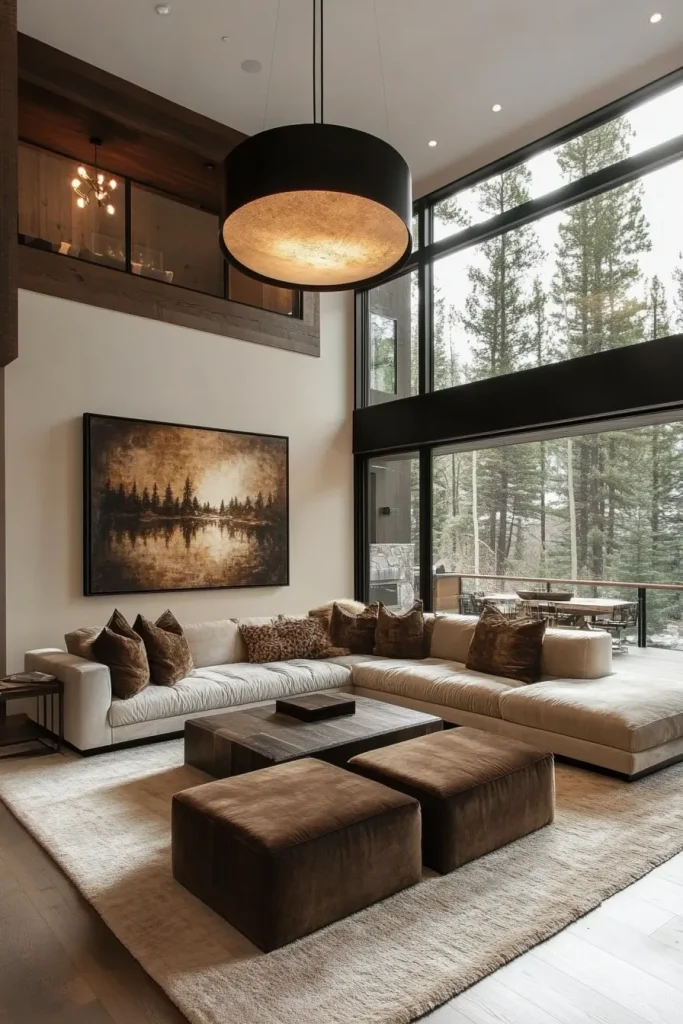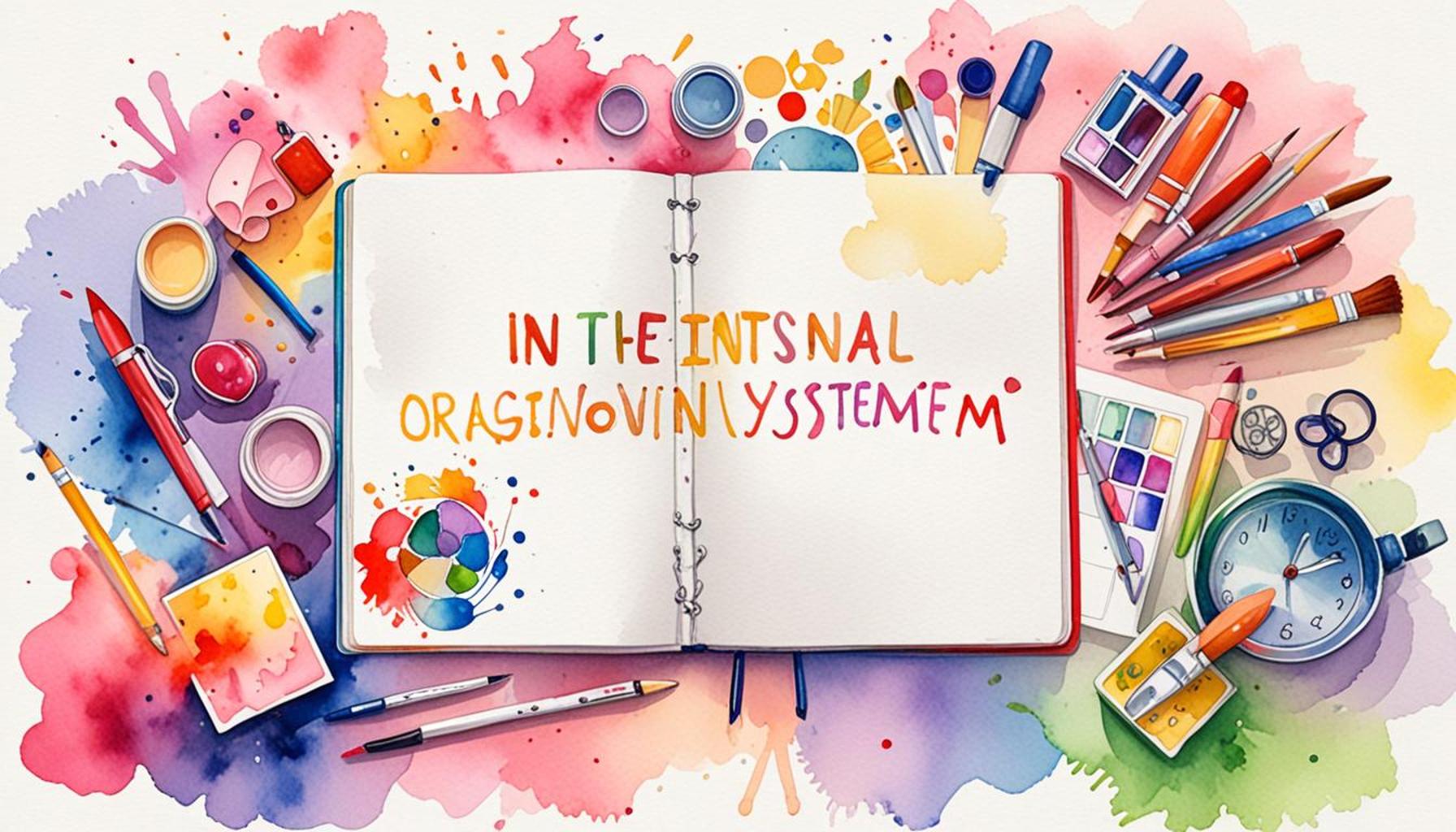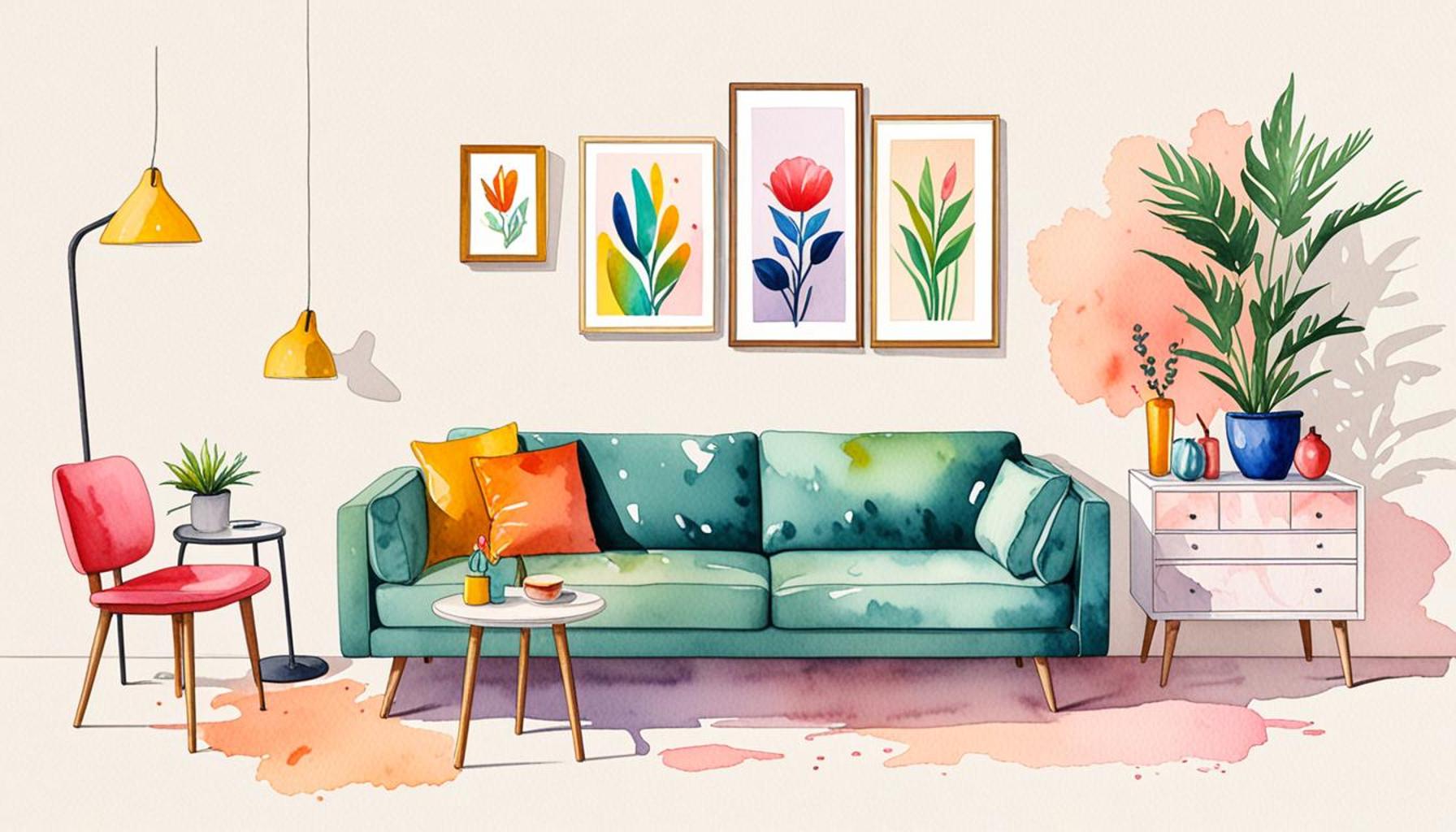The Impact of Intentional Design on Sustainability: Creating Minimalist Spaces that Respect the Environment

Embracing Intentional Design
As the impacts of climate change become increasingly tangible, the call for sustainability in our living spaces intensifies. Intentional design fosters environments that prioritize both functionality and ecological integrity. This design philosophy urges us to explore how we can build and furnish spaces that reflect our commitment to the planet while fulfilling our human needs.
One of the cornerstones of intentional design is minimalism, characterized by simplicity and efficiency. By reducing clutter and focusing on a few high-quality items instead of many lesser ones, we actively lower the environmental burden. Minimalism promotes a lifestyle where we cherish what we have and embrace experiences over possessions, ultimately leading to waste reduction. For example, when setting up a living room, selecting a single, well-crafted sofa made from sustainable materials can be more impactful than filling the space with multiple pieces that contribute little value.
Integrating Natural Materials
Incorporating natural materials like wood, bamboo, and stone into our living environments not only enhances the aesthetic appeal but also reduces the carbon footprint associated with manufacturing synthetic products. For instance, reclaimed wood furniture or bamboo flooring is not only stylish but also a testament to responsible sourcing and sustainable practices. The warmth and unique character of these materials foster a harmonious relationship with nature, making our spaces feel more alive.
Energy Efficiency as an Essential Feature
Another vital aspect of intentional design is embedding energy-efficient features into our spaces. Architectural elements, such as large windows, maximize natural light, reducing the necessity for artificial lighting during the day. Proper insulation and energy-efficient appliances lower energy consumption and contribute to a smaller ecological footprint. In regions with varying climates, like the temperate zones of the Midwest, incorporating passive heating and cooling techniques can significantly optimize home energy use. For example, strategically placing overhangs can provide shade in summer while allowing sunlight in during winter, enhancing comfort while conserving energy.
Intentional design encourages us to engage in a deeper reflection on how our living environments affect the Earth. From urban lofts in New York City to sustainable tiny homes in the hills of California, thoughtful design has the potential to create a significant positive impact on communities and the environment. Each design choice we make offers an opportunity to innovate, reimagine living spaces, and inspire collective actions towards a more sustainable future.

As residents of a rapidly urbanizing nation, understanding the weight of our architectural and decorative choices can open avenues for creativity and responsibility. Furthermore, the embrace of minimalist and sustainable designs today not only contributes to personal well-being but also lays the groundwork for healthier ecosystems, ensuring that future generations inherit a thriving planet.
DISCOVER MORE: Click here to optimize your space
Transforming Spaces through Purposeful Choices
In our pursuit of sustainability, the concept of intentional design becomes a beacon, illuminating the path toward smarter living. As we redefine our spaces, the integration of thoughtful elements transforms not only the aesthetics but also the footprint we leave on our planet. Intentional design invites us to consider both the function and the ecological impact of our choices, shaping environments that truly resonate with our values.
At the heart of intentional design is the notion of mindful consumption. When we embrace minimalism, we’re not just decluttering our homes; we’re engaging in a deeper conversation with our possessions. This approach encourages us to critically evaluate each item’s contribution to our lives. Rather than amassing items that quickly lose their utility and charm, we prioritize durable and multifunctional pieces that serve diverse purposes. By doing so, we significantly reduce waste and promote sustainable craftsmanship.
Connecting with Nature
The synergy between indoor spaces and the natural environment cannot be overstated. Intentional design strives to create a seamless connection between these two realms, enhancing our well-being while reducing the environmental impact. Here are several ways to enhance this connection:
- Biophilic Design: Incorporating elements like indoor gardens, living walls, or potted plants brings the outdoors in, improving air quality and fostering tranquility.
- Natural Light: Maximizing daylight through large windows and skylights not only brightens a space but also boosts mood and productivity, making for a more enjoyable living environment.
- Views of Nature: Strategically placed windows offering vistas of gardens or landscapes can enhance emotional well-being and remind us of our place within the ecosystem.
These design choices ultimately lead to a deeper appreciation for our surroundings, inspiring us to make conscious decisions that support sustainability. Moreover, research indicates that natural elements in our environments have been linked to reduced stress levels, increased creativity, and overall improved mental health.
Repurposing and Upcycling for a Sustainable Future
The trend of repurposing and upcycling has gained tremendous momentum within the realm of intentional design. Instead of discarding items that may no longer serve their original purpose, creative minds are turning to innovative solutions, transforming the old into the new. This practice not only mitigates waste but also adds character and storytelling elements to our living spaces. Consider the following:
- Transforming an old ladder into a stylish bookshelf.
- Turning reclaimed barn wood into unique wall art.
- Refurbishing vintage furniture instead of buying mass-produced alternatives.
Each project honors the lifecycle of materials, proving that sustainability is a tangible consequence of design ingenuity. Engaging in repurposing not only fosters environmental stewardship but also sparks creativity and personal expression in the home.
As we navigate our evolving relationship with the environment, the principles of intentional design offer not just an aesthetic shift but a holistic lifestyle change. By cultivating spaces that reflect sustainability and minimalism, we weave a narrative of resilience and responsibility, one choice at a time.
The Role of Materials in Minimalist Design
Intentional design in minimalist spaces emphasizes the importance of the materials chosen for construction and decor. Using sustainable materials can greatly reduce the environmental impact of a building or interior space. Recycled, reclaimed, and locally sourced materials not only lower carbon footprints but also promote a circular economy, reducing waste and preserving natural resources. For instance, incorporating bamboo, a rapidly renewable resource, or reclaimed wood can infuse spaces with character while cheering for sustainability.
Energy Efficiency as a Design Principle
Another critical aspect of intentional design is energy efficiency. Designing spaces that maximize natural light, employ passive heating and cooling techniques, and utilize energy-efficient appliances can significantly diminish energy consumption. By focusing on effective insulation, high-efficiency windows, and renewable energy sources such as solar panels, minimalist spaces can operate at a reduced ecological cost, setting a benchmark for sustainable living.
Enhancing Wellbeing through Intentional Design
The aesthetics of minimalist design not only serve environmental purposes but also contribute to the mental and emotional wellbeing of occupants. By creating uncluttered, serene environments that focus on functionality and simplicity, individuals can experience reduced stress levels, greater clarity, and improved focus. Spaces imbued with calming colors and organic forms resonate positively, promoting a connection with nature that is often lost in overly ornate designs.
Community Impact and Education
Intentional design fosters a sense of community responsibility toward sustainability. When individuals are educated on the impact of their design choices and embrace minimalist principles, entire neighborhoods can shift toward greener practices. Holding workshops, sharing knowledge about sustainable materials, and encouraging collective participation in green initiatives can lead to an empowered community advocating for environmentally conscious living.
Conclusion
The ripple effects of minimalist design extend beyond individual spaces. By embracing intentional design principles and prioritizing sustainability, we can inspire future architects, designers, and homeowners to create environments that respect the Earth while accommodating the needs of its inhabitants. Through advocacy, education, and deliberate choice, the path toward sustainable living is paved, one minimalist space at a time.
| Sustainable Material Choices | Environmental Benefits |
|---|---|
| Recycled and reclaimed materials | Diminished waste, conserved resources |
| Locally sourced materials | Reduced carbon footprint, supports local economy |
DISCOVER MORE: Click here to learn about the synergy of design and sustainability
Integrating Technology Responsibly
In an increasingly digital world, the concept of sustainability is evolving, and smart technology has become an integral part of intentional design. The integration of energy-efficient devices and smart home systems can significantly contribute to a minimalist lifestyle while reducing the ecological footprint. From energy monitoring systems that track usage to smart thermostats that optimize heating and cooling, technology allows us to exert greater control over our environment without compromising our commitment to sustainability.
Additionally, the proliferation of energy-efficient appliances plays a pivotal role in this transformation. Many appliances now carry Energy Star labels, indicating their commitment to energy conservation. By investing in such devices, homeowners can drastically cut their energy consumption, ultimately leading to lower carbon emissions. For example, replacing an older refrigerator with a modern energy-efficient model can result in energy savings of up to 50 percent, cascading into significant cost savings over time.
Prioritizing Local Resources and Solutions
Intentional design also champions the use of local materials and resources, emphasizing the importance of reducing transportation emissions and supporting local economies. By sourcing materials from nearby suppliers, homeowners can minimize the environmental impact associated with long-distance shipping, which often contributes to greenhouse gas emissions. Furthermore, this approach fosters a sense of community and collaboration, as local artisans become engaged in the design process.
- Locally-sourced materials: Consider utilizing reclaimed wood from local buildings or metals sourced from nearby foundries. These choices not only imbue spaces with character but also promote a circular economy.
- Sustainable landscaping: Choosing native plants for outdoor spaces conserves water and minimizes the need for chemical fertilizers and pesticides. Additionally, they provide critical habitats for local wildlife.
- Community resources: Engaging with local workshops and cooperative spaces can yield innovative sustainable solutions, encouraging skills like woodworking or crafts that close the loop on waste reduction.
These principles emphasize local stewardship of resources, further bridging the gap between our built environments and the ecosystems that support them.
Embracing Flexibility and Adaptability
Intentional design also embraces flexibility in space usage, allowing environments to respond to changing needs. By focusing on adaptable spaces, we cultivate an ethos of minimalism that resists unnecessary consumption. Multifunctional furniture pieces and modular designs enable individuals to transform their spaces without significant renovations or additions. This kind of adaptability reduces the demand for new materials and the waste that comes from frequent upgrades.
- Modular furniture: Items that can be reconfigured or expanded help households accommodate changing family dynamics without excess consumption.
- Dividers and movable shelving: These elements allow for customizable spatial divisions, fostering both privacy and functionality while minimizing the need for additional construction.
As we begin to embrace the principles of adaptability, intentional design opens up new avenues for creating minimalist spaces that embody sustainability in both form and function. This approach not only encourages environmental mindfulness but also enhances our daily living experiences, reminding us that a commitment to the environment can coexist harmoniously with the art of living well.
DISCOVER MORE: Click here to learn about the one-year rule for decluttering
Conclusion
In summary, intentional design serves as a cornerstone for sustainability, paving the way for the creation of minimalist spaces that not only enhance our daily lives but also respect the environment. By integrating technological advancements responsibly, prioritizing local resources, and fostering flexibility in design, we can significantly reduce our ecological footprint while enjoying the benefits of a more streamlined lifestyle. The connection between thoughtful design and sustainability emphasizes the need to lower consumption and maximize utility without compromising style or comfort.
As we advance into a future heavily influenced by climate change and resource scarcity, adopting minimalist principles allows us to re-evaluate our relationship with material goods and our surroundings. Every choice we make—be it selecting energy-efficient appliances, sourcing local materials, or opting for modular furnishings—contributes to a larger movement towards environmental integrity. This journey not only cultivates a sense of community and individual responsibility but also invites us to explore innovative ways to live harmoniously with nature.
Ultimately, embracing intentional design in our homes and workplaces is a powerful means of fostering sustainability. Each minimalist space we create becomes a testament to our commitment to preserving the planet, urging us all to consider how our living environments can reflect our values and respect for the Earth. The future of sustainable living lies in our hands, driven by a conscious choice to design intentionally and tread lightly on this beautiful planet.


